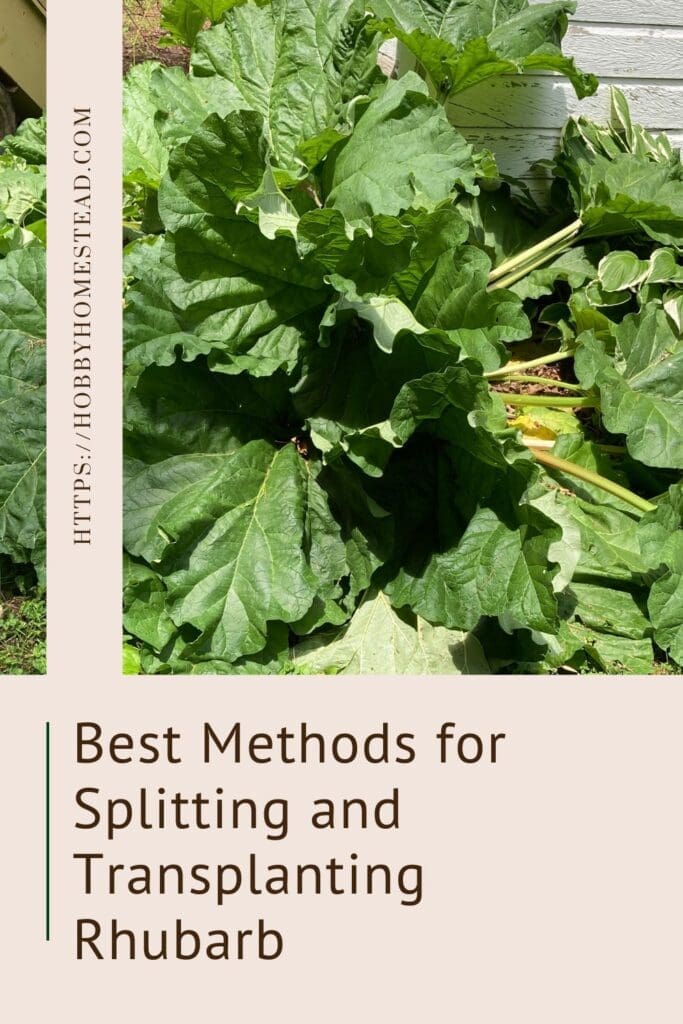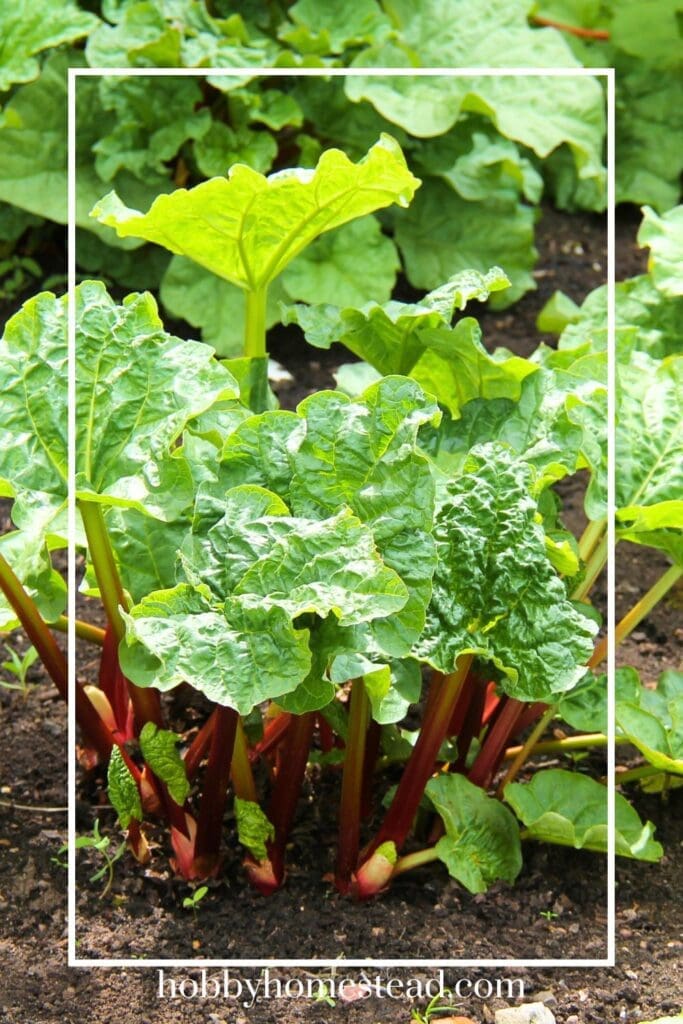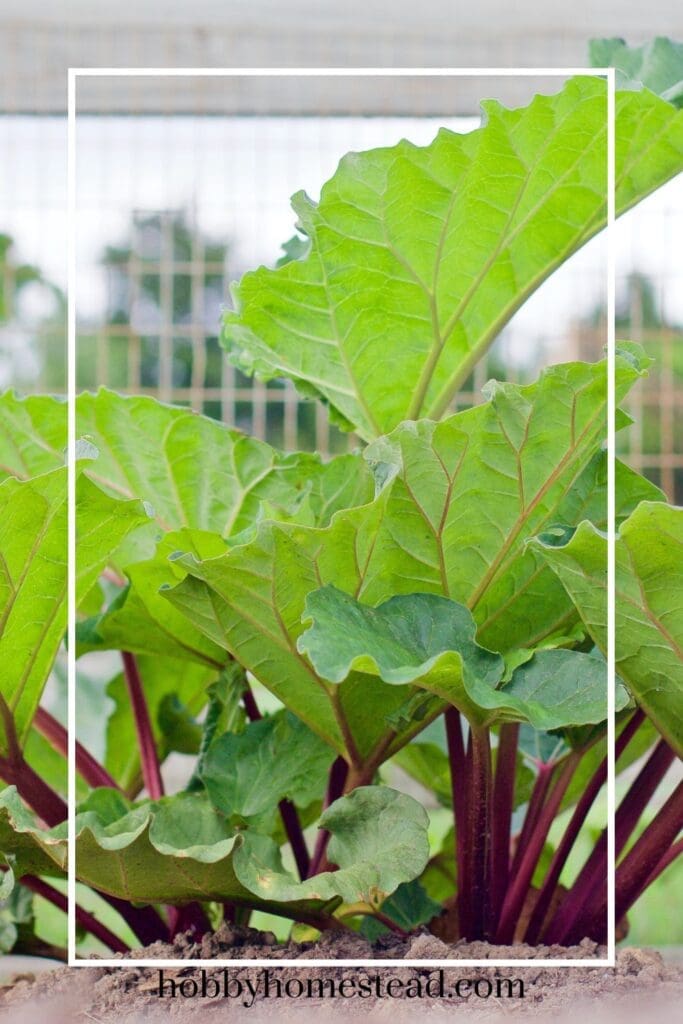In this guide, you’ll learn the best methods for splitting and transplanting rhubarb, including the ideal time of year, step-by-step instructions, and how to care for your new plants to ensure the best rhubarb yield in their first year and beyond.
Rhubarb (Rheum rhabarbarum) is one of the earliest vegetables to grace gardens across the United States and beyond.
This perennial vegetable, with its large stalks and big leaves, thrives best in full sun and well-drained soils, making it a favorite for gardeners who want fresh, tart stalks for pies, jams, and more.
If you want to keep your rhubarb patches healthy and productive, splitting and transplanting your plants every few years is a great way to give them new life and promote a strong root mass.

When Is the Best Time to Split and Transplant Rhubarb?
The ideal time to divide rhubarb plants is either early spring—around early April, after the last frost—or early fall, typically early October, before the ground freezes. Both these periods allow the plants to establish strong roots in their new home before harsh weather arrives.
Dividing rhubarb in early spring is the best thing for gardeners eager to extend their harvest season, as the signs of new growth become visible and the root ball is easier to handle. On the other hand, early fall transplanting allows the plants to rest and settle before the next growing season begins in the following spring.
Why Split and Transplant Rhubarb?
Over time, rhubarb forms large clumps of rhubarb with a dense root mass and old crowns that can reduce plant vigor. Splitting the entire plant or a portion of the root system every 3-5 years is a great way to encourage new divisions and propagate rhubarb plants.
Dividing prevents root rot disorder that can develop in crowded rhubarb patches and helps maintain healthy plants with large stalks and vibrant leaf stalks. It also allows you to expand your garden or share bare-root plants with friends.

Best Methods for Splitting and Transplanting Rhubarb
Tools and Materials You’ll Need
- A sharp spade or garden knife
- A sharp knife for cutting through thick roots
- Gloves (rhubarb contains oxalic acid, so avoid skin irritation)
- Plastic bags or brown paper bags to transport divisions
- Compost, organic matter, or animal manure for soil enrichment
- Mulch such as inches of straw for moisture retention
Step-by-Step Guide to Splitting Rhubarb
1. Prepare Your Plant and Soil
Water your rhubarb bed a day before you plan to split to soften the soil. Choose a day in early spring or early fall when the weather is mild.
2. Dig Up the Rhubarb Plant
Using a sharp spade, dig carefully around the base of the plant to lift the root clump or root ball out of the ground. Be sure to dig wide enough to keep the roots intact.
3. Clean the Root Ball
Shake off excess soil and rinse the roots gently if needed to see the crown of the original plant clearly. This is where the new plants will grow from.
4. Divide the Root Ball
Using your sharp knife or garden knife, cut the root ball into smaller sections, each with at least one or two buds and a portion of the root system. These are your divided plants or new rhubarb divisions.
5. Prepare the Planting Sites
Choose planting sites with full sun or light shade and well-drained soils enriched with compost or organic matter like sheep pellets or aged animal manure. Dig planting holes wide and deep enough to accommodate the root clumps.
6. Transplant the Divisions
Plant each division at the same depth it was growing before. Cover the roots well, firm the soil, and water thoroughly to reduce transplant shock. Mulch with inches of straw to conserve moisture and suppress weeds.
Planting Rhubarb in the Ground: Key Tips
- Choose the Right Location:
Rhubarb thrives best in full sun, though it can tolerate some light shade. Pick a spot with well-drained soils rich in organic matter like compost or aged animal manure. - Prepare the Soil:
Before planting, loosen the soil to at least 12-18 inches deep. Mix in plenty of compost or sheep pellets to boost fertility and improve drainage. - Dig Proper Planting Holes:
Make your planting holes large enough to accommodate the root clump or root ball of the rhubarb division. Space plants about 3 feet apart to allow room for those large clumps of rhubarb to grow. - Planting Depth:
Plant each division so that the crown of the original plant is about 1-2 inches below the soil surface. This helps protect the buds while allowing them to sprout easily. - Water Thoroughly:
After planting, water deeply to settle the soil around the roots and reduce transplant shock. - Mulch for Moisture and Weed Control:
Apply inches of straw or another organic mulch around the base of the plant to keep moisture in and weeds out. - Avoid Harvesting in the First Year:
Give your newly planted rhubarb time to establish strong roots before you start cutting leaf stalks. This leads to a healthy plant and better harvest season the next year.
Planting rhubarb in the ground is a good idea if you have the space and want those long-lived perennial plants to spread naturally over time. Just keep in mind their preference for cool roots and sun above, and you’ll have a thriving patch of rhubarb to enjoy for years.
Potting Rhubarb: Growing in Containers
If you don’t have space for a large garden, rhubarb can be grown in pots with good drainage holes. Choose a large container to allow the root mass to spread and fill it with rich, well-draining potting soil. Plant the divisions slightly deeper than they were growing in the garden and water regularly.

Aftercare for New Rhubarb Divisions
- Provide proper care by watering consistently but avoiding soggy soil.
- Apply a balanced fertilizer or organic amendments in spring.
- Avoid harvesting stalks in the first year to let the plant establish a strong root system.
- Remove flower stems as they appear to conserve the plant’s energy for leaf and stalk growth.
- Keep an eye out for root rot disorder and pests.
Tips for a Successful Rhubarb Transplant
- Never remove more than a third of the stalks at a time to keep the plant healthy.
- If you need to transport divisions, wrap the roots in a plastic bag or brown paper bag to keep them moist.
- Different varieties of rhubarb may have slightly different care needs, so check the specifics for your plants.
- Avoid dividing during the hot summer months to reduce the risk of transplant shock.
- Remember, rhubarb is a long-lived perennial; with the best care, your plants can thrive for many years.
Maintaining Your Rhubarb Patch
Splitting and transplanting rhubarb is an essential part of maintaining long-lived plants that continue producing large, delicious stalks year after year. Whether you choose the best time in early spring or early fall, following these steps will give your rhubarb the best chance to flourish in its new home.
With a little effort and proper care, your rhubarb patches will reward you with a bountiful harvest season for many growing seasons to come. Good luck with your rhubarb division and enjoy the fruits of your labor!


